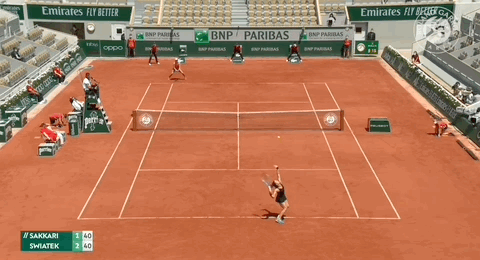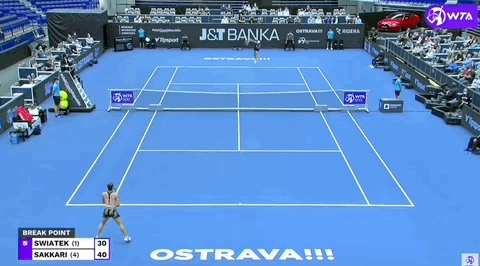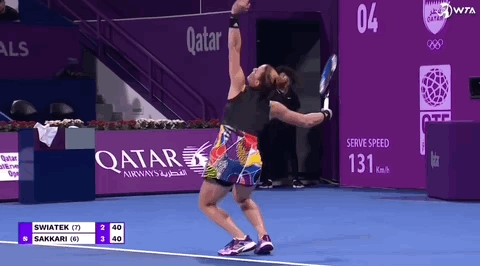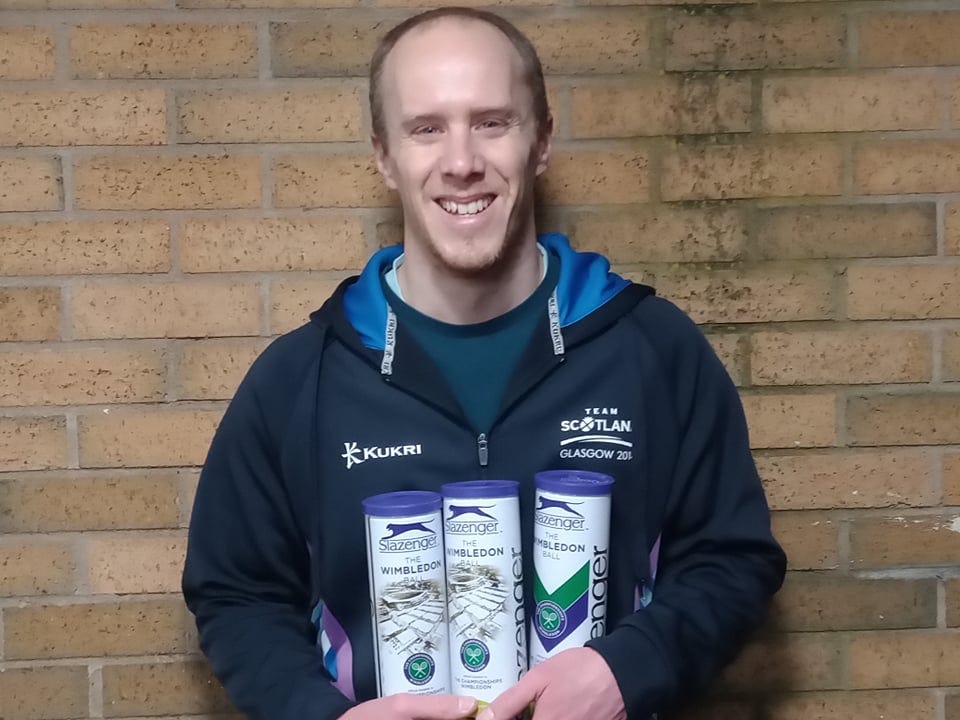How Iga Swiatek won the 2022 Indian Wells Masters
Last Sunday, Iga Swiatek won the Indian Wells Masters. Here's how she defeated Simona Halep and Maria Sakkari to win the third Masters title of her career.
This Swiatek girl’s becoming a bit of a mainstay here at ‘On The Line’ HQ…
Last Sunday, Iga Swiatek won the Indian Wells Masters, the third Masters title of the 20-year-old’s brief career.
Two matches to analyse today:
Swiatek’s win over Simona Halep in the semifinals.
Swiatek’s win over Maria Sakkari in the final.
Enjoy!
BNP Paribas Open Semifinal: Iga Swiatek defeats Simona Halep 7-6 (6) 6-4
It had been a tough tournament.
Bar Iga’s one-sided win over Madison Keys in the quarterfinals, she had won from a set down in all of her matches so far.
The semifinal against Simona Halep had the potential to be the toughest of the lot though.
The pair had played three times, Halep with a 2-1 record and a 1-0 record on hard-courts after beating Swiatek in three sets at last year’s Australian Open. Halep currently sits at third for match-win percentage this year on hard-courts and is within the top-10 in the WTA singles race.
If Iga was going to silence the hard-court doubters once and for all, a win over the 2015 champ was the way to do it.
In Melbourne
At the Australian Open, though the scoreline was fairly close, one aspect of Swiatek’s game let her down badly (those of you that read the piece on Swiatek’s win in Doha know what’s coming)…
The shot that has seen Swiatek find that extra gear on a hard-court of late, the shot she is hitting flatter and flatter, the shot she is hitting earlier and earlier… the backhand return!
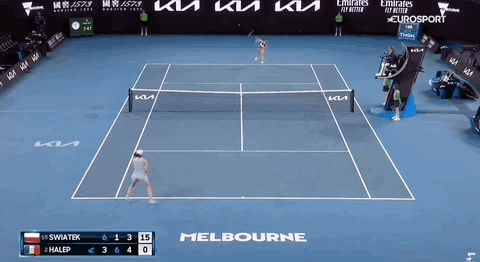
Against Halep in Melbourne, Swiatek won 4/28 points where she hit a backhand return. An absolutely mind-blowing stat on paper but the GIF above gives us an idea of what she was doing wrong, especially hitting back into Halep’s backhand wing.
The returns themselves were rarely played with much penetration through the court, often sitting up for Halep to have a go at. As I said in that Doha article, in 10 of her last 12 losses on hard-courts, Swiatek made 71% of her backhand returns but won only 29% of these points - she was finding the court easily enough but was rarely finding a way of getting up in the point with the backhand return.
This was a major key to Halep’s success - the Romanian won a healthy 77% of her first-serve points Down Under.
Double The Work
The problem with hitting a backhand return against Simona Halep is that Swiatek could hit an aggressive backhand return against her and still not be up in the point.
Swiatek could lace a backhand return cross-court and Halep could return that return with interest. Another couple of strong backhands would be required to win this tussle, essentially doubling the workload required of Swiatek to win a backhand return point than she would need against mere mortal backhands.
It created a pretty interesting dynamic in this match at Indian Wells. Swiatek was still able to boss plenty of points with her preferred forehand but many of Halep’s serves forced her into trading backhands cross-court.
The former world #1 still has the slight edge in this pattern of play able to go line more easily than the Pole however, where Halep had previously won the vast majority of these exchanges, Swiatek was keen to at least break even against Halep’s greatest weapon. In the first set, her trust in this shot came good in some incredibly important moments.
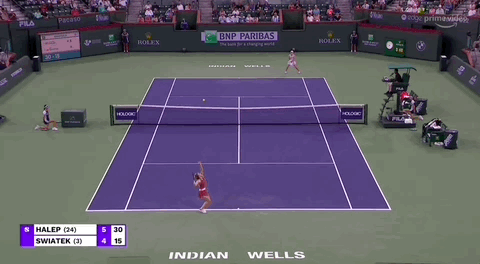


Swiatek finished the match winning 17/41 backhand return points against Halep, 11 of these coming in the second-set when Halep started to wane.
You’ve just seen 2 of the meagre 6 she won in the first set. Could they have come at more important moments of the match? With her back against the wall, Iga put full trust in her most improved shot, putting it to the test against one of the best backhands in the business.
And she came out on top.
Don’t sleep on this win Iga fans - this was a seriously impressive one!
BNP Paribas Open Final: Iga Swiatek defeats Maria Sakkari 6-4 6-1
Iga Swiatek vs Maria Sakkari vs…
The wind?
This wasn’t so much Iga solving a problem like Maria as it was keeping her game steady in the difficult conditions.
It was still quite interesting to see how the wind affected both players and why it inevitably benefitted Swiatek more than it did Sakkari.
The Usual Match-Up
As discussed in the Doha article, Sakkari is able to give Swiatek a hard time using the following weapons:
Uses her sliding first-serve to get some cheap points off the forehand return.
Takes advantage of Swiatek’s less-potent backhand return on hard-courts to take control with her own backhand.
Neutralises Swiatek’s groundstrokes by rushing them with deep, pacey shots down the middle.
Flipped in Doha
In Doha, Swiatek removed the final two weapons of Sakkari by going after her backhand returns, often hitting them deep down the middle of the court to counter Sakkari’s fire with her own fire.
Though Sakkari was still able to win some cheap points off the first-serve, overall Swiatek was able to break Sakkari’s serve five times where she had only broken her twice in total in their previous three matches.
The Wind vs The Match-Up
The match-up is a bit of necessary pre-reading before going into how the wind affected the match.
Swiatek commented on how difficult the conditions were.
“Well, I'm not an expert at handling that easily. The conditions are the things that you can't control so you have to let it go. But today I felt like I have to win ugly and I felt like we were both pretty tight at the beginning. So it was hard for me to actually play the things that I wanted to play and to play according to the plan that we had.
But I'm pretty glad that I was the one who was more solid because in these conditions the most important thing is to just, really, play the ball in. I felt like Maria had been risking a lot with her approach shots. For sure she was putting pressure on me, but still I managed to get the ball back. That's the most important thing for me, just staying in the rally today and not being the one who was making the mistakes.”
Interesting points made there.
Swiatek admitted herself she’s not the most comfortable player in the wind and that she couldn’t really play according to the plan she’d made with Tomasz Witkorowski. Unlike Doha, we saw very few balls played over the highest part of the net from her, opting to go down the middle or cross-court, often with less pace than she’d used in their previous meeting. A lot more tentative from the Pole just to get balls in the court.
Here’s the really interesting point. Sakkari was the one making the mistakes. In previous meetings, in slower conditions, she’d been the one to blast the ball down the middle of the court to knock Swiatek back and give herself an attackable ball. Why was Swiatek better able to adapt to the conditions than Sakkari?
Flat Serving Advantage Neutralised
The wind was clearly blowing primarily in one direction, downwind of the side closest to us viewers.
Sakkari served four times on this side and was broken four times.
Though she was serving downwind, which could theoretically give her more mph on her serve, her flat first-serve delivery made it far more difficult for her to find the court than she would have liked.
From the downwind side, Sakkari made 50% of her first-serves. She double faulted all seven times from here.
From the upwind side, Sakkari made 79% of her first-serves and missed zero second-serves.
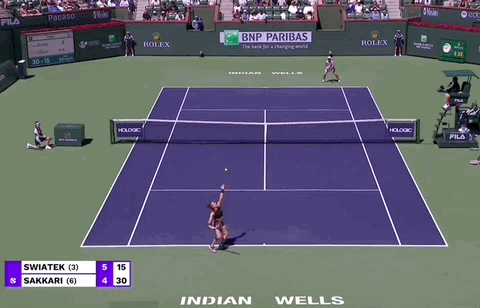
Not only was Sakkari’s advantage on first-serve nullified, she was also feeling immense pressure to find the court with her second, double faulting twice on break points and a further three times to bring up break points. Sakkari finished the match winning 20% of her second-serve points, the lowest amount in her career.
Swiatek exerts a lot more spin on both of her serves - this can ordinarily be disadvantageous on hard-courts but in these conditions it allowed her to put more serves in the court (67% first-serves to Sakkari’s 58%). She still struggled, also double faulting seven times, but normally it’s Sakkari that would rely on a few cheap points on serve here or there to win.
That advantage was removed.
Low Over The Net
The downwind of the court continued to hurt Sakkari outside of the serve too due to her preferred style of play.
Take a look at the spins and average net clearance of the two players.
Swiatek forehand: 2251rpm, 92cm over the net.
Swiatek backhand: 1875rpm, 72cm over the net.
Sakkari forehand: 2323rpm, 62cm over the net.
Sakkari backhand 1479rpm, 64cm over the net.
Sakkari normally squeezes her shots over the net, particularly the backhand which she rifles flat, low and quick through the centre of the court to draw an attackable ball from her opponent.
With the wind floating her shots a bit longer than usual, it became very difficult to land the ball in the court hitting in this manner.

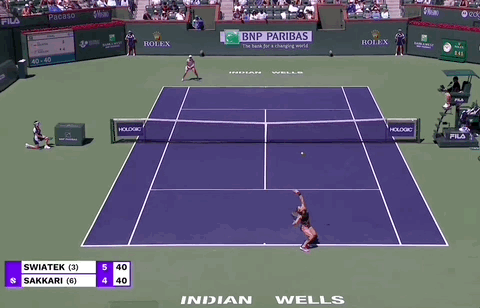
Sure there were times where Sakkari was able to find a forehand but they would often come off a well-struck backhand down the middle.
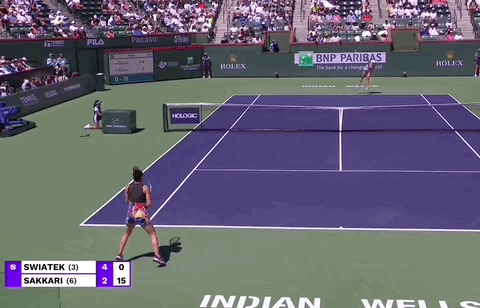
Even then, there were times Sakkari got the backhand right and Swiatek still found a way to absorb the pace.
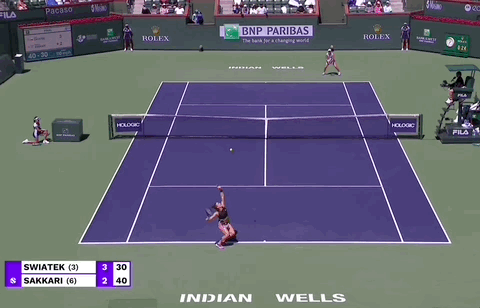
TLDR
So in summary…
Sakkari’s usual serving advantage withered in the wind. Couple this with the fact Swiatek’s returns have improved and that her return position was super-aggressive… Sakkari lost six of her service games.
Sakkari’s struggled to find the court using her usual patterns of play. Swiatek played to the backhand often, actually playing a higher percentage of backhands than she’s ever played against Sakkari, and forced Sakkari to play a perfect ball down the middle of the court. The spin and the margin over the net Swiatek puts on her shots gave her a lot more safety from the tougher end of the court.
A very odd match that didn’t play out the way I expected. Still a very good win that improves Iga’s head-to-head to 2-3 against Sakkari.
Back-to-Back Masters Champ
From Doha to Indian Wells, that’s two in a row for Iga.
In my opinion, her win against Simona Halep was her second-best win of the season (right behind Sakkari in Doha). She went toe-to-toe with Halep’s greatest weapon and came out victorious, testament to the improvements she’s made to her backhand return over the last few months.
Her win against Sakkari was indeed ugly. It probably wasn’t how she expected to get the W but she played smart measured tennis to subdue her opponent… and once she had one foot ahead, there was no stopping her1.
Miami will be tough. I’m not sure I make her favourite (ironically over Sakkari or Halep), the quicker courts and mental fatigue likely to be difficult to handle. If anyone can prove me wrong though…
Well done Iga!
The winner of the latest On The Line prize draw is PJ - he wins three tins of Slazenger Wimbledon tennis balls!
If you share the latest On The Line post or subscribe to the blog for free, you'll be entered into the next prize draw. Winner to be announced in April!
Also, we’re moving home! We are set to move to onthelinetennis.uk in a number of weeks. Your new subscriber request may go to junk mail so PLEASE look out for it!
You can sign up early for free by clicking the below button. Be kind - we’re still under maintenance so things will look a bit scrappy at the moment!
Follow me on Facebook (@onthelinetennisblog), Twitter (@jackedward1994) and Instagram (@jack221194)!
Did you know Swiatek has only ever served for a match and lost overall once on the main tour (against Ostapenko in Dubai last month)? One of the greatest front-runners we’ve ever seen and not a bad come-from-behinder these days either.





